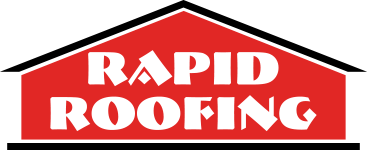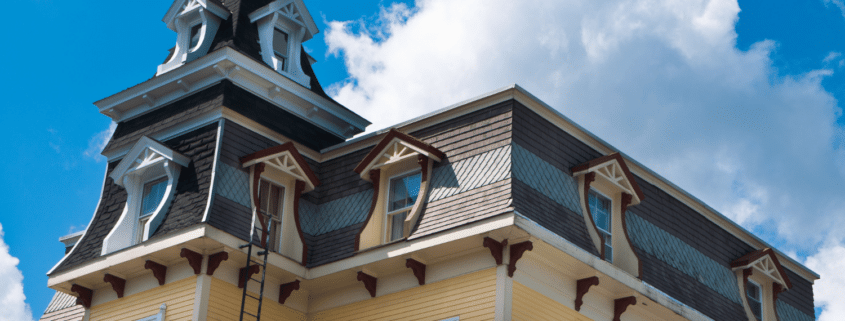Top 9 Types of Roofing You Should Consider for Your Home
Choosing a roof is more than picking a material; it’s about matching climate, style, and budget needs. In this article, we present 9 types of roofing you should consider, highlighting their distinct advantages without the sales pitch. We’ll help you understand each type’s relevance, so you make a choice that’s well-informed and suited to your home.
Key Takeaways
-
Roofing types such as gable and hip roofs provide versatility and aesthetic options specific to architecture style, while materials like asphalt, metal, and composite offer varying benefits in cost, durability, and appearance.
-
Gable roofs are cost-effective with better drainage and energy efficiency, suited to cold climates, while hip roofs offer enhanced stability and wind resistance, demanding higher craftsmanship for construction.
-
Choosing the right roofing material is imperative for long-term durability and visual appeal, factoring in the cost, design, and maintenance, with asphalt shingles being highly versatile and metal roofing offering longevity and energy efficiency.
Exploring the Best Roofing Options for Your Home
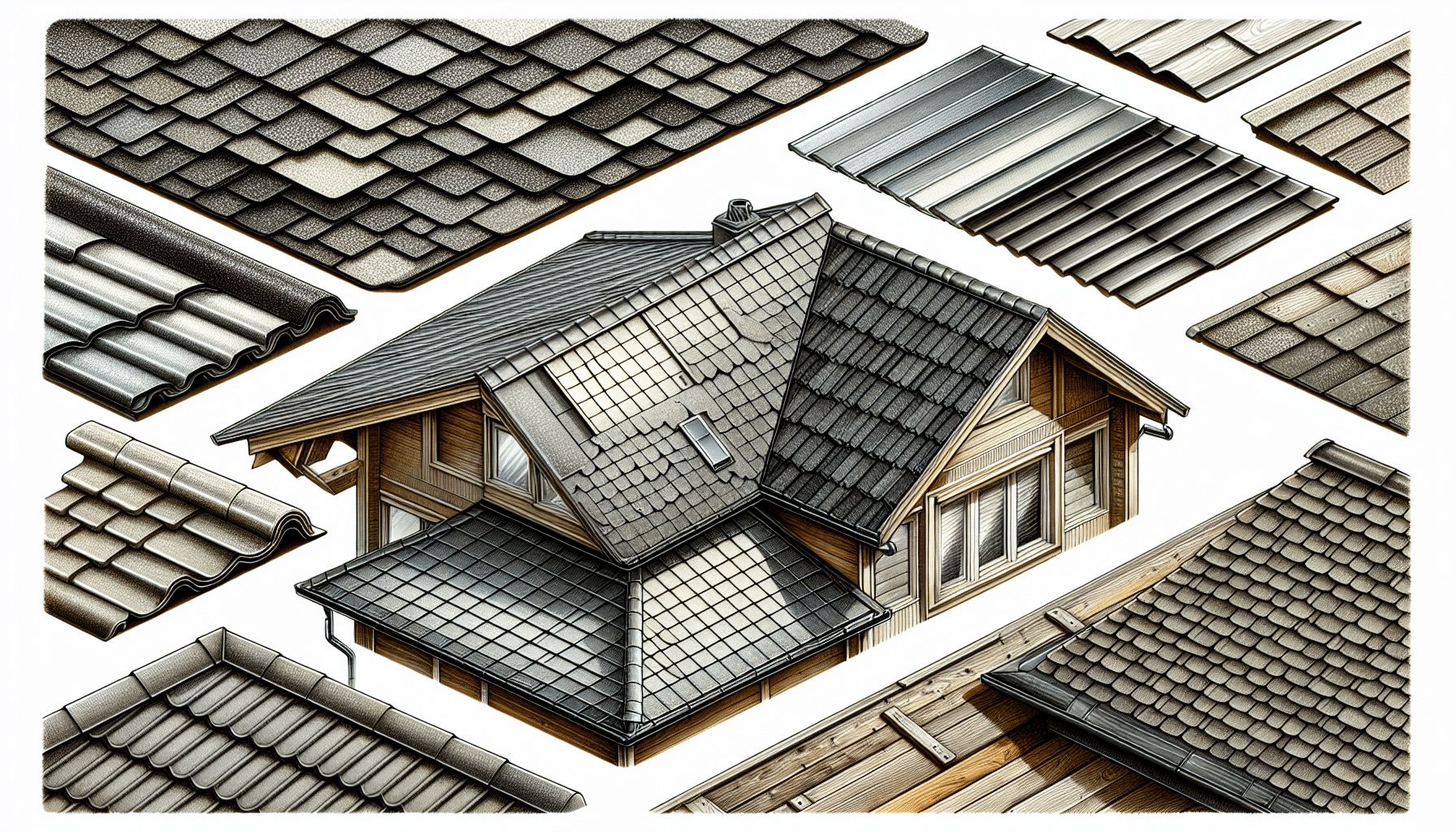
The importance of understanding different types of roofing materials cannot be emphasized enough. The roof can constitute up to 40 percent of the home’s exterior, hence the choice of roofing significantly affects both the aesthetic and functional aspects of your home.
Roofing options such as gable and hip roofs are versatile, suiting just about any home while being affordable. These types of roofs have become standard types for a variety of architectural designs. If your home leans towards a colonial or pastoral aesthetic, gambrel, mansard, and jerk-head roofs can enhance the architectural style. For the ultra-modern architectural aficionados, skill or flat roof types offer a distinct and contemporary appearance.
The choice of roofing material plays a crucial role in determining the roof’s durability, cost, and overall appearance. Common materials for roofing include asphalt shingles, metal roofing, and rubber roofing. Each of these materials has its unique advantages.
Synthetic slate tiles made from engineered polymers combined with recycled plastic and rubber offer a lightweight, durable, and long-lasting roofing solution that mimics natural slate. This presents a viable option for those seeking the charm of natural slate without the associated weight and cost.
Gable Roofs: Classic Charm Meets Cost-Effectiveness
Gable roofs have a reputation for being cost-effective due to their simple design. The straightforward structure requires fewer materials like rafters, trusses, and purlins, significantly reducing construction costs.
The charm of gable roofs isn’t just in their affordability. They come with a classic appeal enhanced by their versatility in style. Options such as:
-
Front gable
-
Side gable
-
Cross gable
-
Boxed gable
-
Dutch gable
cater to diverse aesthetic preferences, making gable roofs a popular choice for various architectural designs.
Moreover, gable roofs are particularly suitable for cold and temperate climates. They offer several benefits, including:
-
Excellent drainage capabilities, effectively managing rain and snow and eliminating potential water damage
-
Better ventilation, promoting airflow and reducing the risk of moisture buildup
-
Energy efficiency, helping to regulate indoor temperatures and reduce heating and cooling costs
These advantages make gable roofs a popular choice for homeowners across various climates.
While gable roofs have an appealing balance of affordability and versatility, it’s important to note that in high wind areas, they may require additional measures. Aspects such as gable end bracing can prevent uplift and ensure stability, making your gable roof a long-lasting investment.
The Resilience of Hip Roofs
Hip roofs are a fantastic choice for homeowners seeking enhanced stability and wind resistance. Their design features a pyramid-like structure with sloping sides meeting at a common ridge. This structure not only enhances stability but also reduces pressure as wind passes over the surface.
The resilience of hip roofs is further improved by employing strong sheathing, framing materials, and high-quality underlayment. These components, coupled with the use of tested materials and proper overhangs, provide excellent protection against strong winds and ensure a durable roof deck. In the long run, this also reduces the need for a roof replacement. It’s essential to work with experienced roofing contractors to achieve these results.
Employing nails, adhesives, and specialized hardware such as hurricane straps improves the connection of a hip roof to the main structure, significantly increasing its wind resistance.
While building a hip roof is more complex and requires a higher level of craftsmanship, the investment can be justified by the additional stability and potential attic space it provides.
The Unique Allure of Dutch Gable Roofs
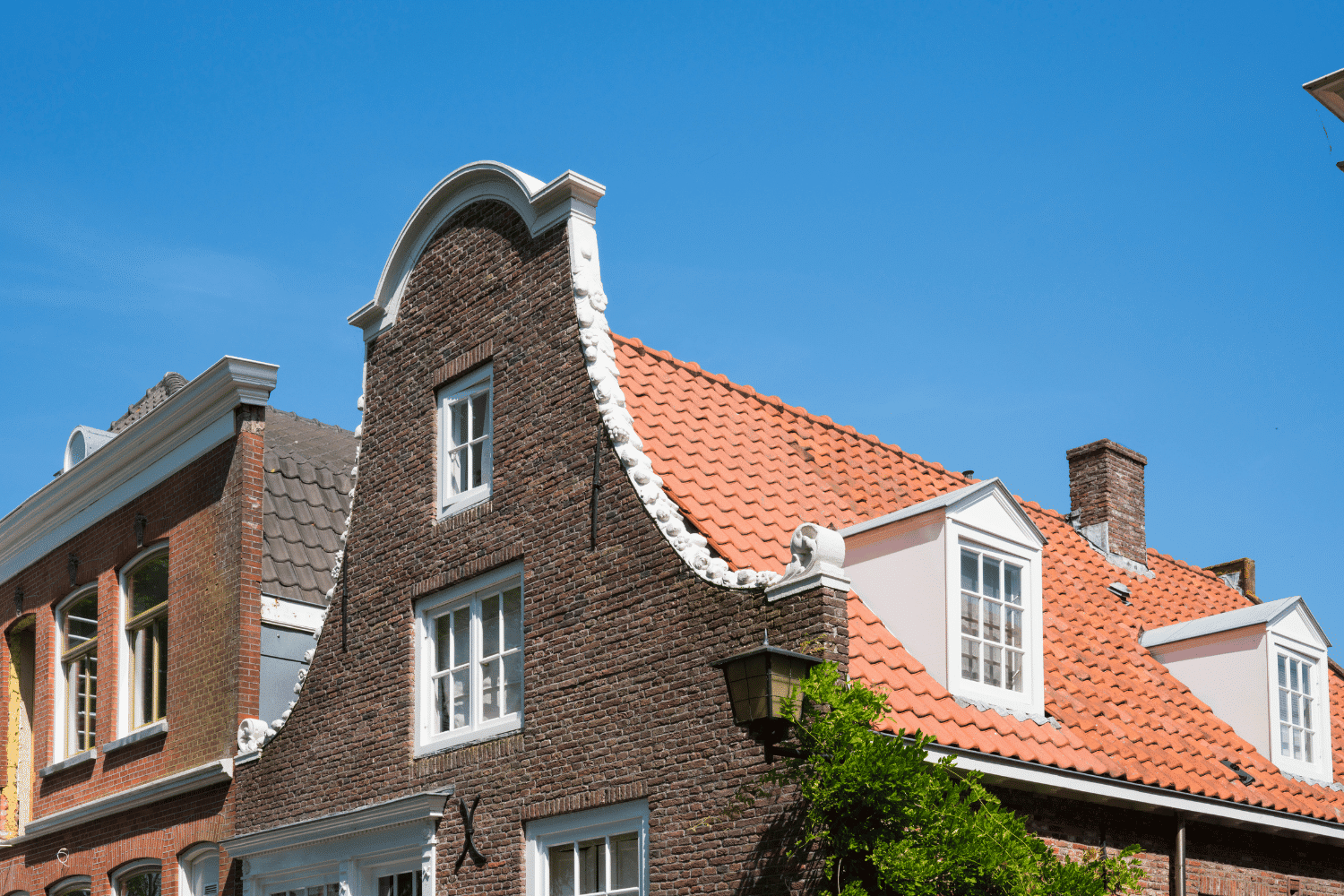
The Dutch gable roof combines elements of both the gable and hip roofs, resulting in a more visually striking appearance compared to either option. It delivers a unique and eye-catching look to a building’s architecture. They feature slopes on all four sides with small gables, called gablets, on two opposite ends. This combination creates a unique aesthetic that can significantly enhance the curb appeal of your home.
The heightened gablet of Dutch gable roofs serves as a distinctive architectural feature. It can potentially house elements like dormer windows, adding an extra layer of charm to your home’s exterior.
But the allure of Dutch gable roofs goes beyond aesthetics. They provide additional interior space, ideal for those needing an extra attic, storage, or room space. Compared to traditional hip roofs, Dutch gable roofs offer more storage space and even allow for the addition of a window in the gablet for enhanced light and air circulation.
While Dutch gable roofs offer several advantages, it’s important to consider the potentially higher construction costs. Their complex design, varied pitches, and the gablet require more materials and skilled craftsmanship.
Gambrel Roofs: Maximizing Space with Style
Gambrel roofs are known for their distinct shape which cleverly maximizes top-story living space. This design allows for the creation of a full-sized room or loft, making gambrel roofs an excellent choice for homeowners seeking additional interior space.
The design of gambrel roofs is straightforward to build due to the lack of valleys or elaborate joints. This simplicity can make them more affordable; however, their larger surface area requires more materials, impacting the overall cost.
Gambrel roofs are versatile in their application. They can be found on various building types and are admired for their traditional American aesthetics, often adding historical value to a home.
Despite offering extra living space, gambrel roofs can be structurally disadvantaged in severe weather. Regular checks and maintenance, alongside proper waterproofing measures at the ridges, are necessary to ensure safety and integrity.
Mansard Roofs: Elegance with Extra Space
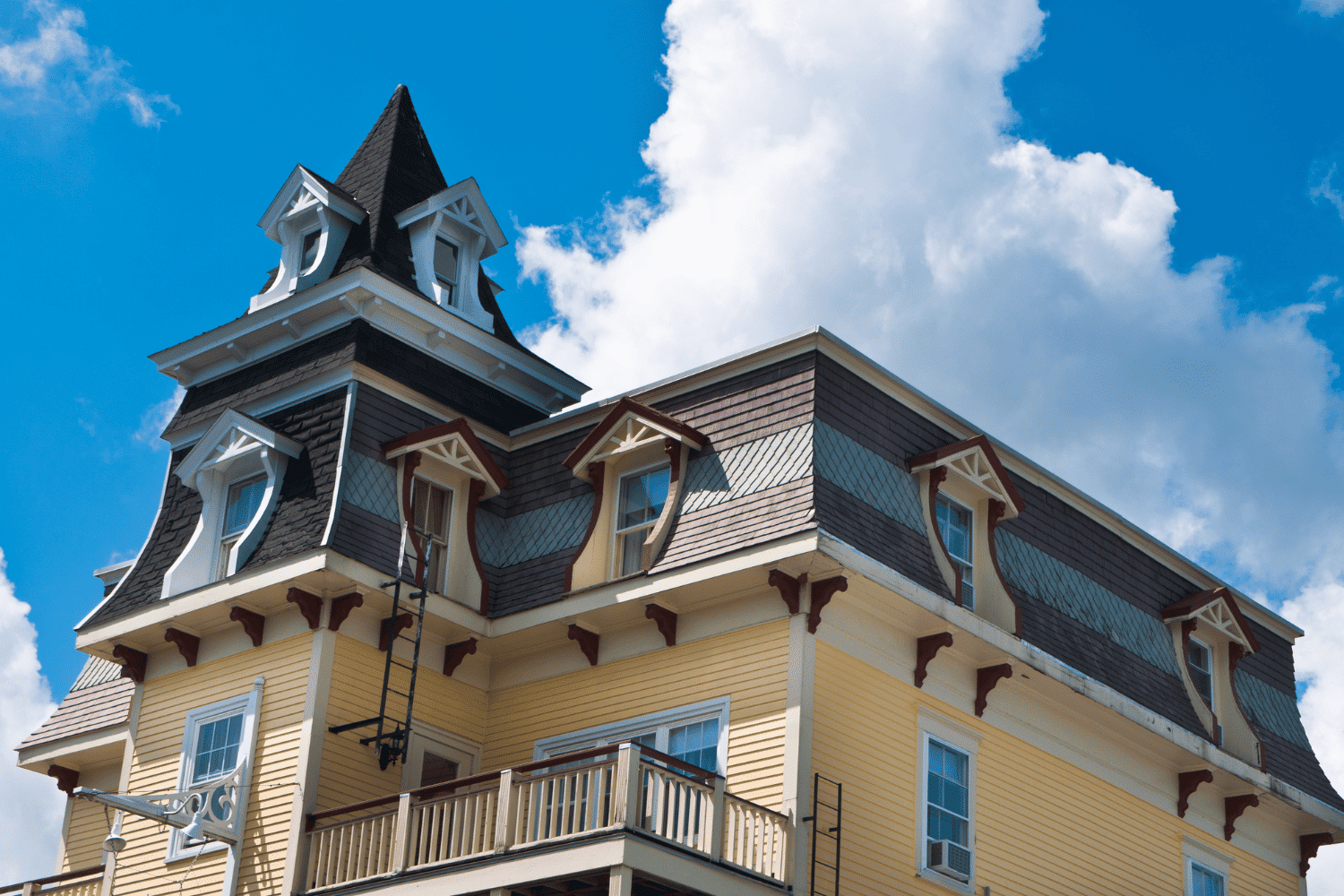
Mansard roofs incorporate a unique design with two sloping surfaces on each side. This design offers considerable additional living space at the top of the home, especially when dormer windows are included. Despite their elegance, mansard roofs are a compatible option for various architectural styles such as Victorian, Colonial, and Tudor. This versatility makes them a popular choice for homeowners seeking an elegant roof that doesn’t compromise on functionality.
While mansard roofs offer numerous benefits, it’s important to note that their complex design leads to higher construction costs. The increased need for materials and skilled labor can potentially raise the overall cost of your roofing project. Due to their intricate design, mansard roofs pose greater challenges in maintenance, particularly in snowy regions. Maintaining these roofs requires roofers with specialized expertise, making it crucial to hire an experienced roofing company like Rapid Roofing.
Saltbox Roofs: Asymmetrical Appeal
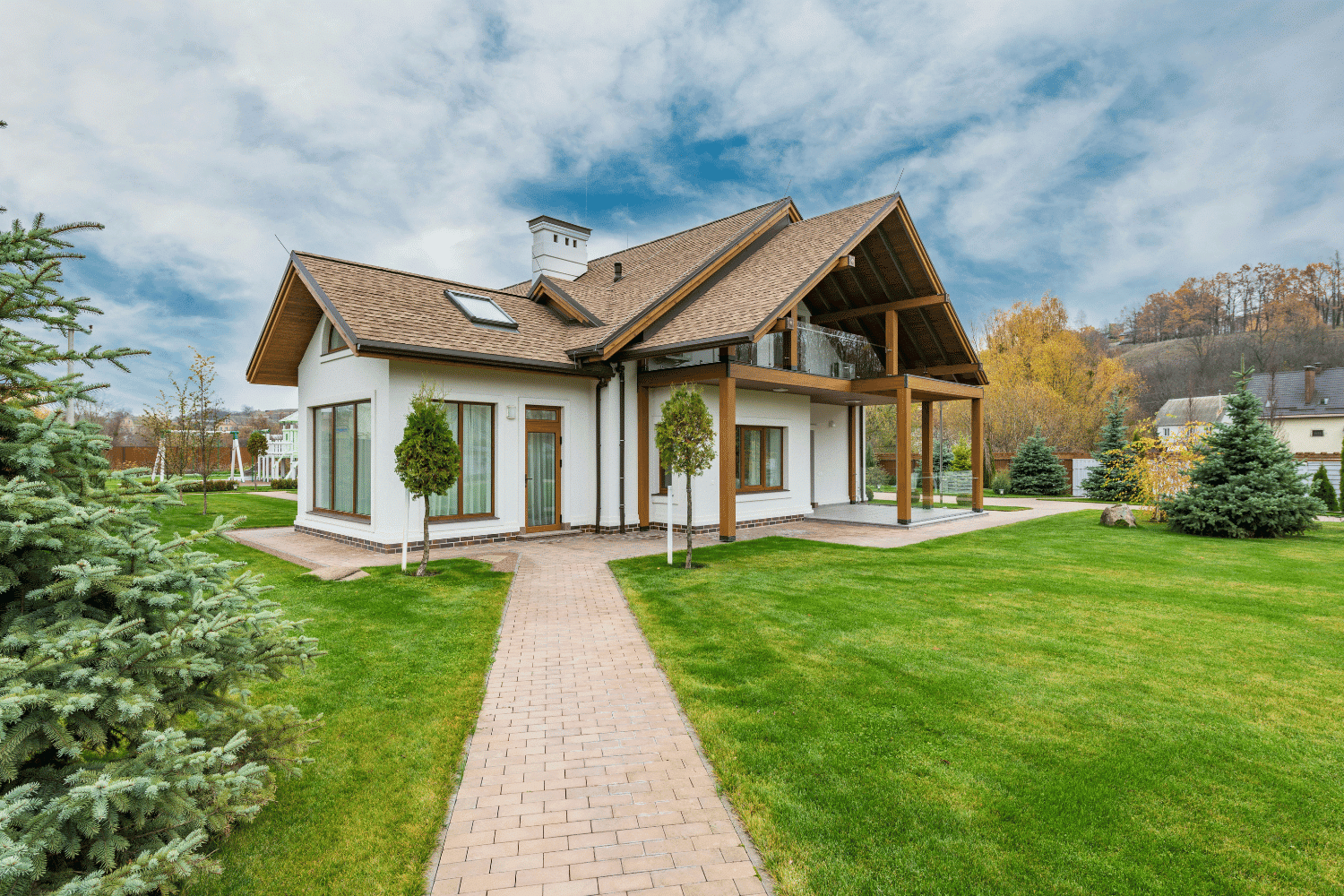
Saltbox roofs first gained popularity in colonial New England during the 17th century. Their unique, asymmetrical design offers a rustic charm while providing additional sheltered outdoor space. As saltbox houses evolved in the late 18th century, they became more ornate with varied windows, elongated designs, and decorative features. Today, modern saltbox houses combine these traditional architectural elements with contemporary amenities, maintaining the style’s legacy.
Saltbox roofs are characterized by:
-
A long, pitched roof that slopes down to the back of the house
-
A one-story addition at the rear, creating a cozy, asymmetrical interior with varying ceiling heights
-
The potential for additional sheltered outdoor space through an extended roof overhang
While saltbox designs can be more costly and complex to build than simpler gable roofs, the unique asymmetrical appeal of saltbox roofs is often worth the additional investment.
Skillion Roofs: Modern Simplicity
Skillion roofs feature a singular, angular, and sloping surface that creates a pronounced, modern aesthetic distinct from traditional roofs. This modern, angular design is a perfect fit for homeowners seeking a contemporary touch to their homes.
The ease of constructing skillion roofs, paired with their compatibility with modern materials like metal and polished concrete, renders them cost-effective and adaptable to different design contexts. This simplicity makes them a popular choice for homeowners seeking a modern, sleek aesthetic without breaking the bank.
Efficient water drainage and the potential for installing solar panels due to the inclined surface contribute to the skillion roof’s weather resistance, energy efficiency, and extended lifespan.
Despite the benefits, skillion roofs demand careful consideration for drainage, may limit interior space, and could be prone to wind damage. These potential limitations could necessitate additional architectural solutions for optimal functionality.
Flat Roofs: Contemporary and Functional
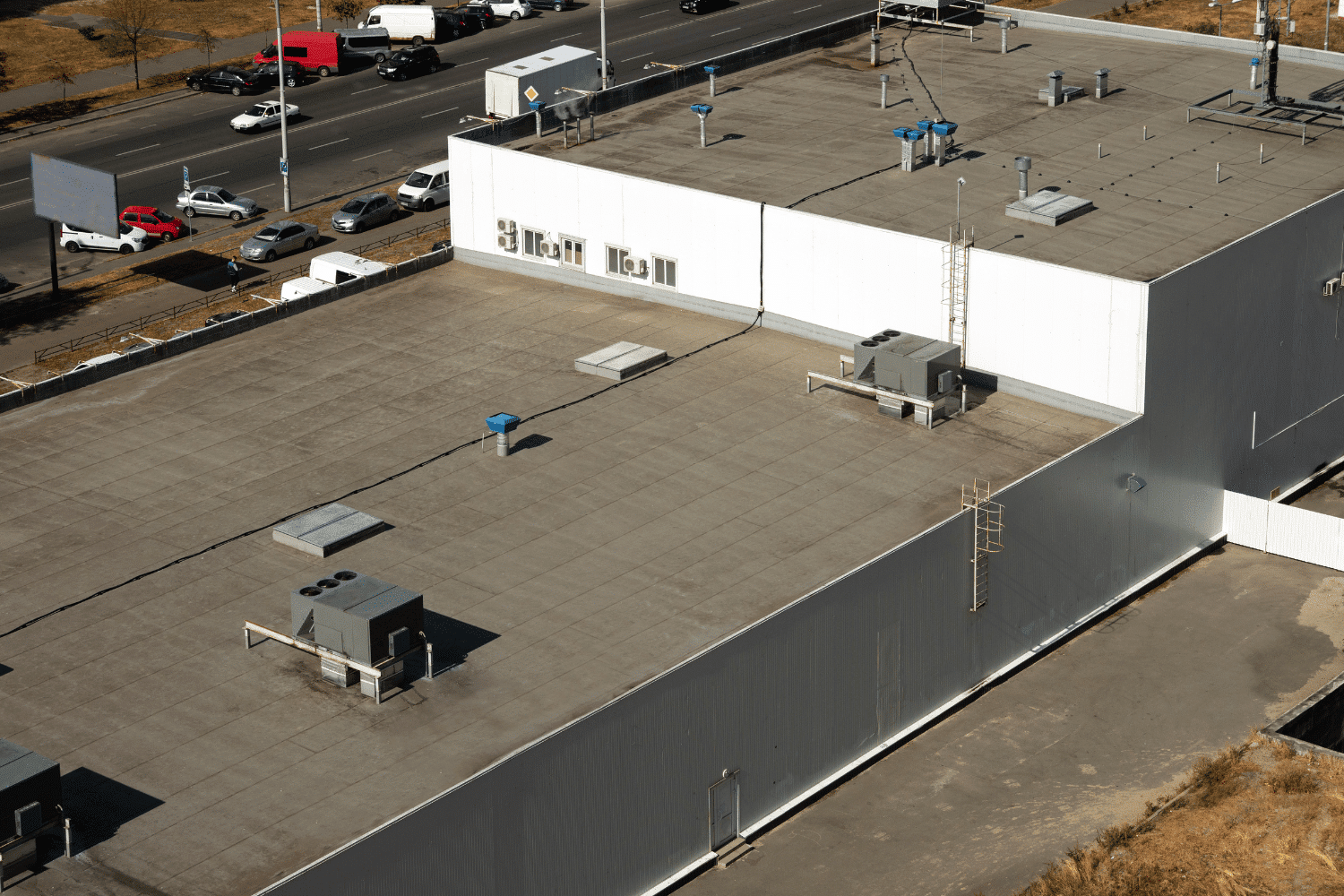
Flat roofs offer practical space benefits for commercial buildings by providing options for equipment storage, such as HVAC systems, and the installation of solar panels. This additional space makes them an appealing choice for both commercial and residential applications, which is why commercial roofing services often recommend them.
The installation of flat roofs offers several advantages:
-
Faster and more cost-effective installation
-
Requires fewer materials
-
Integrates well with construction materials like concrete and steel
-
Allows for additional functionalities like patios or gardens
These benefits make flat roofs a versatile choice.
Flat roofs are well-suited for energy efficiency. Some benefits of flat roofs include:
-
Reflective materials used on them reduce cooling costs
-
Efficient drainage options enhance functional performance
-
They are an environmentally friendly choice, contributing to sustainable living.
The longevity of a flat roof is significantly increased with diligent maintenance, including regular inspections and prompt repairs to prevent larger issues. Regular annual upkeep, in line with warranty requirements, plays a critical role in maintaining the functional integrity of a flat roof.
Selecting the Right Roofing Material: Beyond the Shape
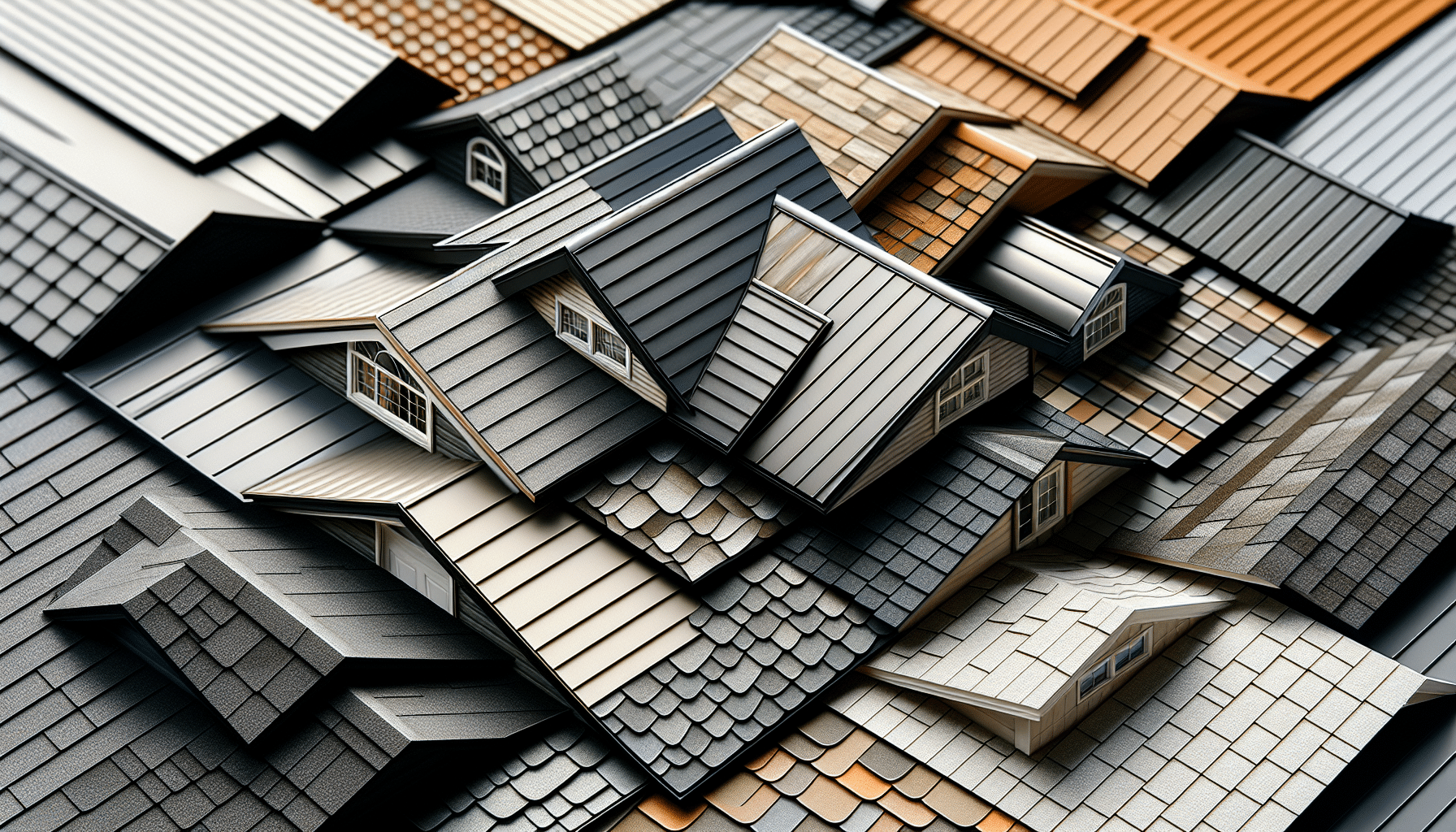
Selecting the right roofing material is as crucial as choosing the right roof type. This choice can significantly impact the durability, cost, and overall appearance of your roof. By using quality materials, you can ensure a long-lasting and visually appealing result.
When selecting a roofing material, important factors to consider include cost, design features, and warranty requirements. These factors ensure that you make an informed decision that aligns with your budget, architectural style, and maintenance capabilities. Consulting a professional roofing contractor can help guide you in making the best choice for your needs.
Other common materials for roofing include slate and wood. These materials generally have the longest lifespans, making them a great choice for homeowners seeking a long-term roofing solution and arguably the best roofing material. In fact, slate and wood are considered common roofing material options due to their durability and longevity.
Asphalt Shingles: Affordable and Versatile
Asphalt composite shingles, made from asphalt coated fiberglass, are the most commonly used roofing material in North America. They’re renowned for their affordability, ease of installation, and service life ranging from 12 to 30 years under varying conditions.
Asphalt shingles come in numerous designs such as 3-tab, dimensional, and premium. They can simulate the appearance of slate or cedar shakes, allowing homeowners to choose a style that enhances curb appeal while benefiting from a cost-effective and long-term roofing solution.
Asphalt shingles are designed for simple installation, while being lightweight enough to avoid the need for additional structural support. This makes them suitable for a variety of roof types without significant modifications.
Regular maintenance of asphalt shingles is crucial for achieving their optimal lifespan of 15 to 30 years. This includes tasks such as:
-
Cleaning gutters
-
Annual roof inspections
-
Ensuring proper ventilation
-
Managing tree branches
Metal Roofing: Durable and Energy-Efficient
Metal roofing is known for its exceptional longevity, with some types lasting up to 75 years. On average, metal roofs have a life expectancy of 40-70 years, significantly outlasting traditional asphalt roofs, which generally last 12-20 years.
Metal roofs are environmentally friendly, and a metal roof contains 25-95% recycled content and is fully recyclable at the end of its life. This sustainability makes them a great choice for eco-conscious homeowners.
The initial cost of metal roofs ranges from $6 to $18 per square foot installed, which can be more expensive initially compared to other materials. However, the long-term savings due to the durability of metal roofs can prove cost-effective for homeowners who intend to stay in their homes for an extended period.
While metal roofing offers numerous benefits, it’s worth noting that it can be noisier than other materials in rain or hailstorms. However, adequate attic insulation can help reduce noise, making metal roofs a comfortable choice for your home.
Composite Shingles: The Synthetic Advantage
Composite shingles offer outstanding durability with warranties often extending up to 50 years. The lifespan of composite shingles can range between 40 to 50 years, requiring less maintenance compared to more traditional shingle types like architectural shingles.
Composite shingles achieve a Class A fire rating and a Class 4 impact resistance rating, ensuring superior protection against fire hazards and severe weather conditions. These safety features make composite shingles an excellent choice for homeowners seeking a safe and durable roofing solution.
Composite shingles can authentically replicate the appearance of more expensive materials such as slate and wood shake. This provides premium aesthetics at a more affordable cost, making composite shingles a great choice for homeowners seeking the look of luxury without the hefty price tag, including those who desire the appearance of wood shingles.
Performance composite shingles are designed with targeted benefits, including:
-
Impact resistance
-
Wind resistance
-
Algae resistance
-
Enhanced fire resistance
These benefits cater to specific homeowner needs, making composite shingles a customizable choice for your roofing project.
Summary
Choosing the right roof type and material is a crucial decision that directly affects the structural integrity, aesthetic appeal, and value of your home. From the classic charm of gable roofs to the modern simplicity of skillion roofs, each roof type offers unique advantages that cater to diverse architectural styles, climates, and personal preferences.
In terms of materials, asphalt shingles are the most commonly used due to their affordability and versatility, while metal roofing is known for its exceptional durability and energy efficiency. Composite shingles provide a synthetic advantage, offering outstanding durability and the ability to replicate the appearance of more expensive materials.
Understanding different types of roofing materials is crucial as the choice significantly affects both the aesthetic and functional aspects of your home. Therefore, it’s important to consider important factors such as cost, design features, and warranty requirements when selecting a roofing material.
With over 30 years of experience, Rapid Roofing not only offers a wide range of roofing services but also provides expert guidance to help you make an informed roofing decision that aligns with your unique needs and preferences.
Frequently Asked Questions
What type of roof is most reliable?
Slate and clay tiles are the most reliable types of roofing, with slate having a life expectancy of over 150 years and clay lasting about 100 years. Other alternatives such as green roofs and solar shingles are also durable but tend to be more expensive.
What is the most expensive roof type?
Slate roofing is the most expensive roofing material. It is important to consider the cost and other factors when choosing the right roofing material for your needs.
What is the difference between a roofer and a carpenter?
The main difference between a roofer and a carpenter is that roofers specialize specifically in roof-related carpentry, while carpenters may work on a wider range of carpentry tasks including framing and roofing.
Why are gable roofs cost-effective?
Gable roofs are cost-effective because their simple design requires fewer materials, such as rafters and trusses, reducing construction costs.
What are the benefits of hip roofs?
Hip roofs offer increased stability and wind resistance, thanks to their pyramid-like structure with sloping sides meeting at a common ridge. These features make them a durable and secure option for residential and commercial buildings.
